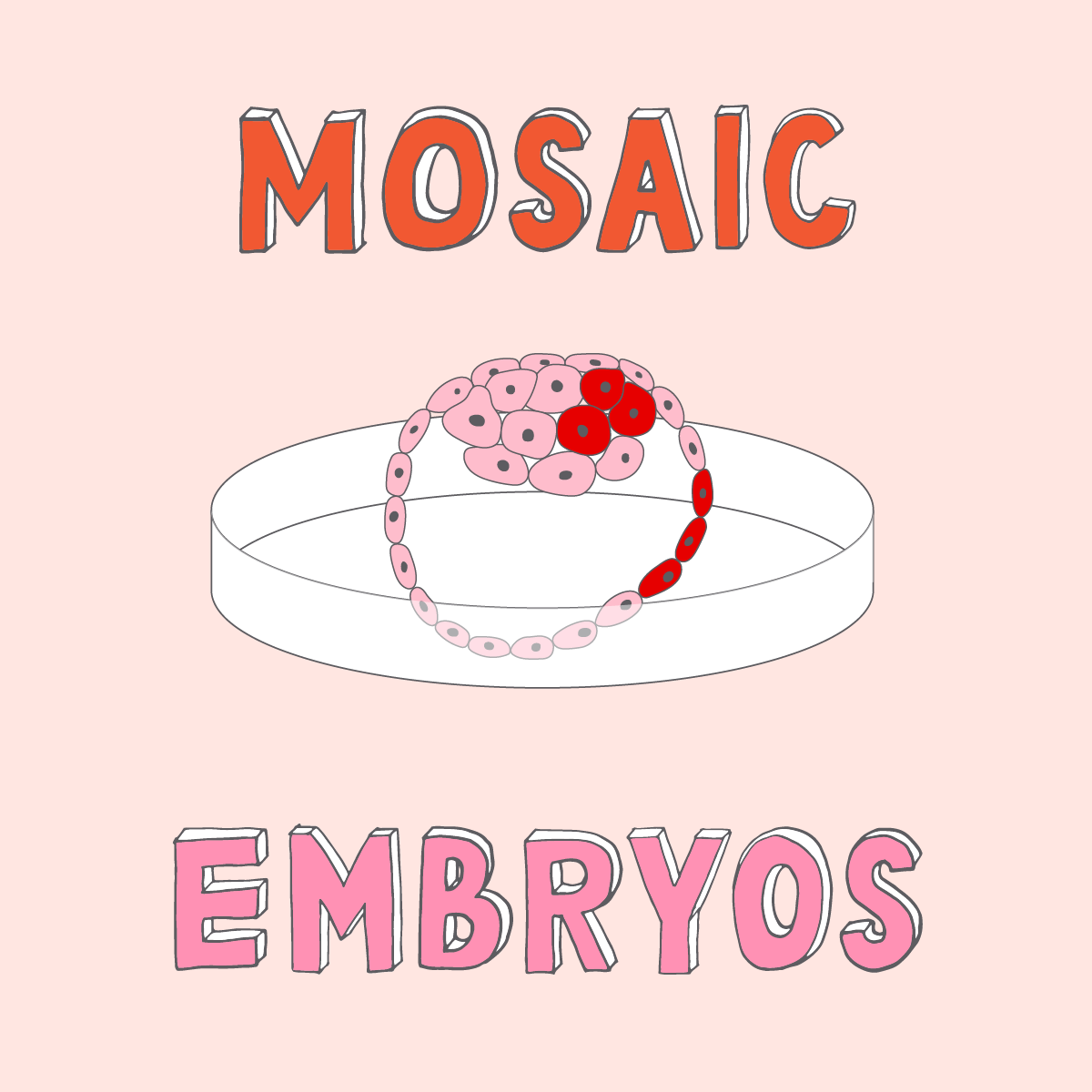Recently in clinic we’ve had numerous patients with Mosiac Embryos, this sparked curiosity for me to share a little more. Before we start, I am no Geneticist. The information provided is from numerous research articles.
PGS TESTING
PGS testing is known as pre-implantation genetic. Screening is normally offered to patients with age factor, recurrent miscarriage, unexplained infertility and male factor . PGS involves screening embryos for any genetic abnormalities. Essentially, the test provides information about the health of the embryo to ensure they have the correct number and order of chromosomes. PGS maximises IVF success rates and patients fertility potential by reducing miscarriage rates and increasing live birth rates.
EUPLOIDS: are embryos with the correct number of 23 pairs of chromosomes. Euploids have a greater chance of leading to a successful live birth.
ANEUPLOID: are embryos with the incorrect number of chromosomes. Aneuploid have a missing or extra chromosome.
Recent advances in genetic screening technology with high resolution, uncovered a third class of embryos that lie somewhere in between. These embryos contain a mix of normal (euploid) and abnormal (anueploid) cells called mosaic.
Geneticists who work in this field have established the following criteria.
- If fewer than 20 percent of the cells in the blastocyst are abnormal, the embryo is labeled as normal.
- If 20 to 40 percent of the cells are abnormal, it is considered a low-level mosaic.
- When 40 to 80 percent of the cells are abnormal, it is labeled a high-level mosaic.
- If greater than 80 percent abnormal cells are present, it will be called abnormal.
A recent study noted that around 10-15% of all embryos are mosaic. Mosiac embryos have recently caused controversy as they pose significant questions to their potential viability – Do you transfer or should they remain on ice?
Mosiac embryos can carry the risk of miscarriage, lower implantation rates or lead to the birth of a child with a chromosomal disease.
A study from fertility and sterility found that approximately 1/3 of mosaic embryos developed into a healthy live birth. Another study highlighted the transfer of mosaic embryos with high percentage of chromosomally abnormal cells resulted in a live birth rate of 16.7% and miscarriage of 10%. In contrast, mosaic embryos with a lower aneuploidy percentage (<50%) resulted in a higher live birth rate of 39.5%, with miscarriage occurring in just 7.0% of the transfers.
Whilst there are many factors that contribute to creating a healthy embryo, t’s important to remember that genetics, while an incredibly important indicator of embryo health, is only one piece of the puzzle. The success or failure following a transfer of a mosaic embryo depends on the extent of the mosaicism and chromosomal abnormality. Each person’s IVF journey is unique.
European Society of Human Reproduction and Embryology. “The transfer of chromosomally ‘abnormal’ embryos can still result in pregnancy in IVF: New study helps resolve controversy over self-correcting ‘mosaic’ embryos.” ScienceDaily. ScienceDaily, 4 July 2017. <www.sciencedaily.com/releases/2017/07/170704093615.htm>.

Amanda is the founder of Angea and has over 12 years of experience working with women to support their health journey. In addition to being a registered doctor of Chinese medicine, Amanda is a yoga teacher and founder of Mindful Pregnancy Yoga Training. Amanda offers acupuncture, Chinese herbal medicine and womb healing treatments at Angea.

